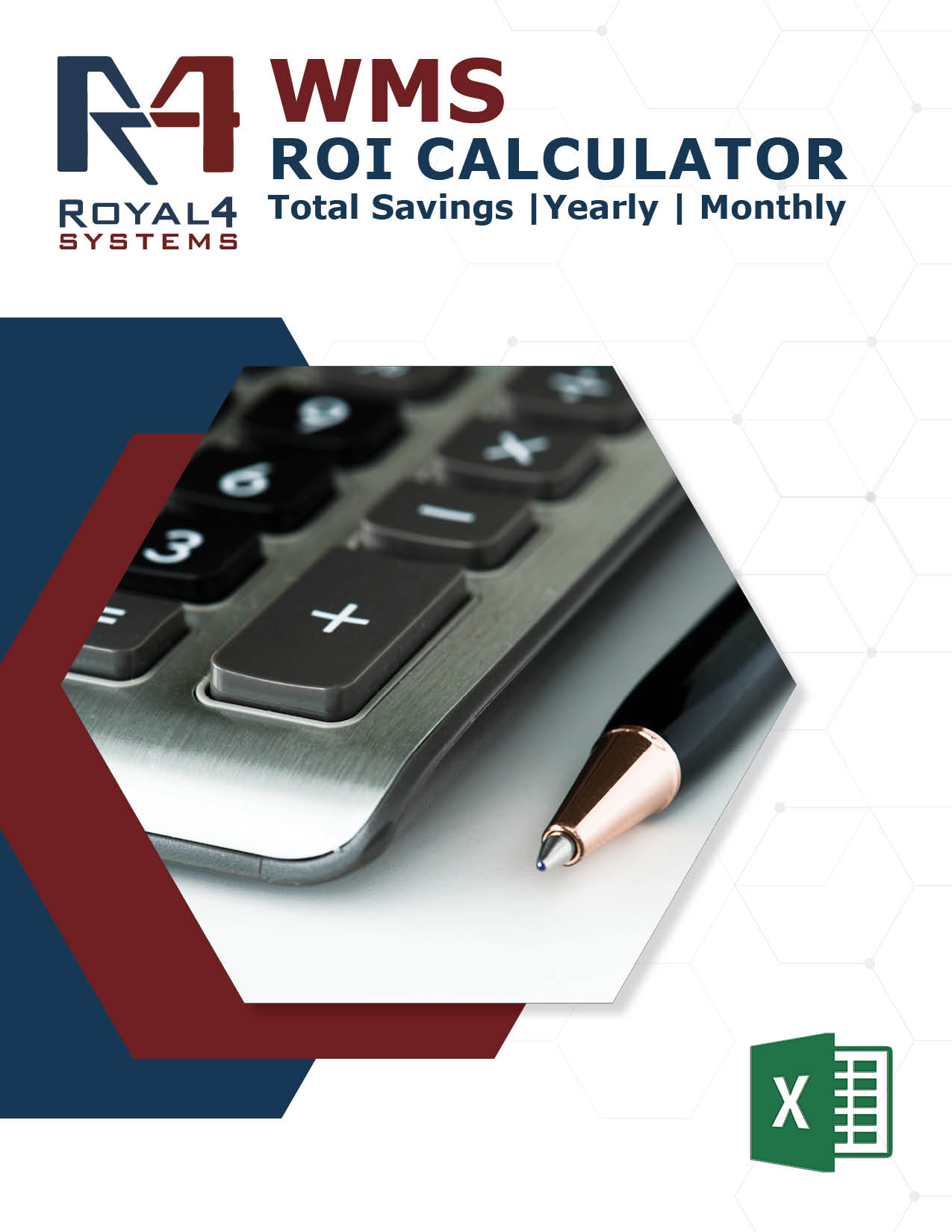
How thoroughly do you know every inch of your warehouse?
Thanks to the warehouse shipping and receiving software process, businesses may find out more about the things that are leaving the warehouse and the shipments that are due to arrive soon. It is essential to follow this approach to ensure that the correct products are provided to customers and that the commodities received are organized following inventory management principles.
The outbound shipping process starts when a product is ready to be dispatched to a customer. Shipments are finally placed into a vehicle and transported out of the warehouse. The shipping paperwork is completed, and the shipments are chosen, packaged, and labeled.
The process for receiving inbound packages comes next once supplies are delivered to the warehouse. It begins with sending purchase orders for the necessary supplies, receiving them at the loading dock, unloading them, and ensuring all anticipated products arrive before integrating them into the current warehouse inventory system.
Coordinating the shipping and receiving processes and other warehouse activities may be challenging. As a result, many companies utilize shipping software to automate the packaging process and distribute goods to customers.
What steps are included in the warehouse shipping and receiving software process?
1. Recording, pre-receipt, and receipt
The first phase of the incoming procedure begins before the products are even received. The receivables should be correctly recorded for tracking purposes. Every aspect of the load that is important should be documented.
This phase speeds up the processes by reducing the quantity of data entry done manually once the procedure has started.
The receipt demonstrates that the job has been completed. The parties have been appropriately communicated with when the products are received.
2. Load arrival
When the goods arrive, everything runs more smoothly since the recording and reception are precise. Using computer software decreases human error, and scheduling is automated.
3. License plate tracking
Essentially, tracking license plates is the most effective method for overseeing your logistics. To retain control and transparency, every warehouse management system does this for all of their vehicles, primarily trucks.
4. Closing receipt
The records are updated, and the received products are kept. Each cargo is appropriately and carefully cataloged before installation. After emptying the trailer or container, the colleague should note that it is prepared for the subsequent receipt.
5. Double-checking
The outward operations will proceed without a hitch if the inbound process is correctly controlled. Order entry is like the beginning of an inbound shipment or mailing service approach. Before checking out and any potential errors and duplications should be looked for; should properly confirm the order.
6. Restocking
In essence, this phase guarantees that the supply chain is consistently updated. A plan has been put in place for the next delivery. You may use a warehouse management system to ensure that reorder specifications and deadlines are known in advance.
7. Packing and loading
Each stage is essential, so you should properly plan the packing procedure. Each item must be carefully inspected and marked before manifesting outbound orders. Keeping in mind that the company’s reputation is continuously on the line, it must meet each customer’s specific requirements. After that, products are loaded, and records are updated.
8. Shipping
The package then arrives at its ultimate destination. This step exemplifies the significance of a warehousing system in keeping everything organized and tracked. The completed work is entered into the system as soon as the delivery is finished.

Difficulties encountered in shipping and receiving.
1. Working environment
Fostering a positive work environment for warehouse employees is essential. Teams responsible for shipping and receiving must be trained to safely use forklifts and other heavy machinery. Another element of having a pleasant workplace is providing restrooms away from potentially dangerous substances.
2. Training
Your firm might be negatively affected by your warehouse personnel receiving insufficient training. Invest in training your shipping and receiving team at each process level.
3. Disorganization
Shipping and receiving will be particularly challenging in a warehouse without a predetermined procedure. Make a simple warehousing plan that doesn’t overly complicate the process.
4. Package errors
More warehousing delays result from the incorrect item being delivered. It’s critical to identify these errors before they have a significant effect. Your business handles its shipping mistakes says a lot about it. Customers applaud companies that acknowledge their errors and set up procedures to make things right.
5. Replenishing items
To satisfy customer demand, communication from the shipping and receiving department regarding inventory or warehouse concerns is essential. Demand planning may be used by warehouse management to get ready for forthcoming replenishment and reorder requirements.
How to improve your warehouse receiving and shipping software processes
1. Install inventory management systems
By automating the process, inventory management software aids e-commerce companies in optimizing their whole supply chain. By employing an inventory management system, you may get real-time inventory counts and more precise data for inventory accounting.
You can monitor real-time stock levels and observe your inventory numbers alter immediately following the warehouse receiving procedure after your existing inventory has been connected to an inventory management system. As a result of inventory forecasts for each SKU, this kind of software also makes it simple to set up automated reorder points that alert you when it’s time to buy more items.
2. Track your inventory metrics
A proper warehouse receiving method will make tracking inventory and transportation costs much easier, especially if you hold stuff in many warehouses or fulfillment centers. Using technology to manage your inventories, you can monitor essential distribution data from a single dashboard.
By monitoring these KPIs and translating them into significant change, business leaders may use their data to gain a competitive advantage.
3. Organize your warehouse
Practicing basic warehouse management techniques, such as keeping the warehouse clear of clutter and tidy, may avoid delays in the warehouse shipping process. Doing minor inventory reorganizations, such as positioning frequently-used items in the most suitable locations, dramatically improves efficiency. However, measurable increases in warehouse productivity could call for a considerable overhaul.
Implementing deep lane storage increases the number of things handled inside one facility. In today’s omnichannel supply chain system, a considerable rearrangement could be necessary to boost order fulfillment’s speed and accuracy dramatically. However, putting in the pallet racking needed for a deep lane storage system will significantly interrupt operations in the warehouse.
4. Implement automation
One of the primary impediments to warehouse transportation is human error. Employees quickly store new things as they come in, and as any operations manager is aware, occasionally, items end up in the incorrect places. Automating the warehouse may remedy this issue by producing trustworthy and consistent production.
As an example, consider automated case selection. Errors have a significant influence on the picking and palletizing processes. When you ship the incorrect item by accident, you must go through a lengthy return process and set up an urgent shipping service to get the correct item to the customer. Because both processes result in additional costs, reducing these incidents can result in financial rewards.
Advantages of effective warehouse shipping and receiving software procedure
1. Reduce delays
It is less probable that you will experience significant delays when the shipping and receiving areas run well. When a process is seamless, items are moved efficiently from reception to inventory, manufacturing, and distribution. Creating a strict put-away process cuts down on receiving time. You may merge picking and packaging processes to expedite delivery.
2. Improved customer service
A warehouse that streamlines its shipping and receiving procedures may deliver goods to clients faster. The two most crucial aspects of this procedure to take into account are accurate route planning and quick shipment.
You have a better chance of keeping that customer if the goods are delivered sooner than anticipated and are of excellent quality. Companies that coordinate supply and demand and understand turnover time employ shipping and receiving to build an effective warehouse in and out procedures.
3. Count stock precisely
Companies may utilize shipping and receiving to monitor everything that goes into and out of the warehouse. It is easier to keep precise inventory counts when these factors are considered. When there is effective shipping and receiving procedure, warehouse management teams have better confidence in their stock counts and feel that all information is accurate.
4. Fewer surpluses and shortages
You can precisely pinpoint where changes need to be made if you better understand how inventory moves through the warehouse. By making it easier for enterprises to get the exact amount of materials they need, the enhanced visibility helps avoid potential shortages and surpluses caused by irregular numbers.
5. Better quality control
The shipping and receiving crews observe every item entering and exiting the warehouse. Before sending defective goods to a client, quality control teams should open the package, check the contents, and ensure the amount received is accurate.
Request a Consultation
Need more information?
Solutions






![image001[25]](https://www.royal4.com/wp-content/uploads/2023/11/image00125.png)